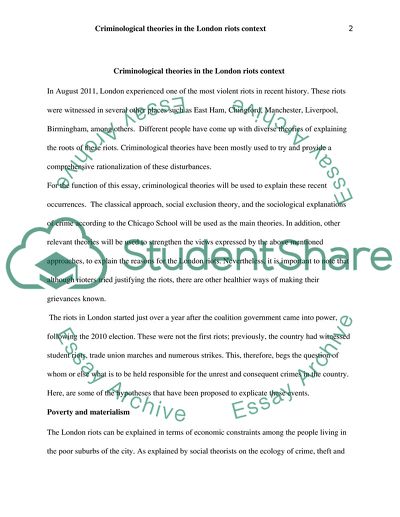Cite this document
(Criminological Theories in the London Riots Context Coursework, n.d.)
Criminological Theories in the London Riots Context Coursework. Retrieved from https://studentshare.org/law/1588405-using-appropriate-criminological-theories-citing-relevant-texts-critically-consider-how-the-recent-riots-in-the-uk-might-be-explained-coming-to-your-own-logical-conclusion-as-to-which-perspectives-are-most-important-in-suggesting-remedies-and-solutions
Criminological Theories in the London Riots Context Coursework. Retrieved from https://studentshare.org/law/1588405-using-appropriate-criminological-theories-citing-relevant-texts-critically-consider-how-the-recent-riots-in-the-uk-might-be-explained-coming-to-your-own-logical-conclusion-as-to-which-perspectives-are-most-important-in-suggesting-remedies-and-solutions
(Criminological Theories in the London Riots Context Coursework)
Criminological Theories in the London Riots Context Coursework. https://studentshare.org/law/1588405-using-appropriate-criminological-theories-citing-relevant-texts-critically-consider-how-the-recent-riots-in-the-uk-might-be-explained-coming-to-your-own-logical-conclusion-as-to-which-perspectives-are-most-important-in-suggesting-remedies-and-solutions.
Criminological Theories in the London Riots Context Coursework. https://studentshare.org/law/1588405-using-appropriate-criminological-theories-citing-relevant-texts-critically-consider-how-the-recent-riots-in-the-uk-might-be-explained-coming-to-your-own-logical-conclusion-as-to-which-perspectives-are-most-important-in-suggesting-remedies-and-solutions.
“Criminological Theories in the London Riots Context Coursework”. https://studentshare.org/law/1588405-using-appropriate-criminological-theories-citing-relevant-texts-critically-consider-how-the-recent-riots-in-the-uk-might-be-explained-coming-to-your-own-logical-conclusion-as-to-which-perspectives-are-most-important-in-suggesting-remedies-and-solutions.


